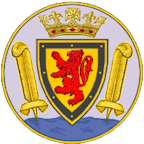History 1875 to 1900
Saltash acquired another small community in 1877, when Mount Edgcumbe Industrial Training Ship for Homeless and Destitute Boys was anchored off-shore, close to the bridge, where she was to remain until 1920. One of eleven such ships around Britain, she provided charitable help for orphaned boys and minor offenders by training them for a naval career. During the First World War Captain Harkcom, Captain Superintendent of Mount Edgcumbe since 1910, claimed proudly that not very many ships in the Royal Navy were without one or more of his old boys on board. Some, however, joined the Army and the many the Mercantile Marine.
The river steamers were now becoming very popular for tourist excursions. Many visitors came to Saltash to buy shellfish from the shops in Tamar Street, colloquially known as 'Picklecockle Alley', and on the sheltered slopes between North Road and New Road there were still orchards and market gardens, where tea gardens were later set up to cater for the growing number of visitors.
In 1881 the Privy Council made an Order by which St Nicholas's Chapel became a parish church. The Order described the building as the "Church of Saint Nicholas and Saint Faith", the addition of 'St Faith' to the original dedication recalling the medieval St Faith's Chapel which once stood near the top of Fore Street. The boundary of the new parish followed the Borough boundary of that time. The Catholic Parish of Saltash began in 1884 when French Franciscans came to open a novitiate in Saltash, converting a house in Lower Port View into a Friary. Their new church was called 'Our Lady of the Angels', and served the Roman Catholics of Saltash as a parish church.
The Liberty of the Tamar was finally terminated on the 1st of January 1886, when the Victorian Charter of Incorporation created Saltash a Municipal Borough, replacing the Corporation with a Borough Council. However, the collection of dues was still permitted until the turn of the century, when the Council sold to the Admiralty the long-held rights over the waters of the Hamoaze, the Sound, and the Tamar Estuary.
St Barnabas Cottage Hospital was built in 1889, in memory of the Reverend Richard Ley, who had settled in Saltash because of his own ill health. By 1890 both the traditional market on the original Alexandra Square site and the pannier market on the ground floor of Market House had ceased operation, although the commercial cattle market started in 1878 on land behind the Green Dragon Hotel continued to be held until 1968. The Market House now became the Guild Hall, and the old Guild Hall building was used as a gaol before being demolished in 1894. Saltash's first police station was built at the junction of Albert Road and Station Road in 1891. In the same year the Methodist Chapel on Lower Fore Street was sold to the Masons and replaced by a new Gothic chapel further up Fore Street, on a site adjacent to the present-day Wesley Road. The old Burraton Methodist Chapel was disposed of in 1893, and a handsome new one built on the present site in Liskeard Road. By now Saltash had a branch of the Bolitho Bank, and the Devon and Cornwall Bank and the Post Office jointly took occupation of a new building in Fore Street which later became Lloyd's Bank. The town also received its first piped water supply in the 1890s, having previously relied on various wells.
In 1895 Captain Henry Jackson (later Admiral Sir Henry Jackson) became commanding officer of the Torpedo School Ship HMS Defiance, which had been anchored close to Wearde Quay since 1884. A pioneer of wireless technology, he managed that same year to transmit a radio signal the length of the ship. In the following year Captain Jackson succeeded in transmitting signals over a distance of several hundred yards. He thus became the first Briton to use radio for practical communication, and the first person worldwide to achieve ship-to-ship radio communication.
To commemorate Queen Victoria's Diamond Jubilee in 1897, a meadow at the top of Fore Street was converted into Victoria Gardens and opened to the public. The Penn Symons monument was later erected at the centre of the gardens, in honour of Major-General Sir William Penn Symons of Hatt, near Saltash. He was the first British General to be killed in the Boer War, at the battle of Talana Hill, in October 1899.
page updated 2025-03-21
